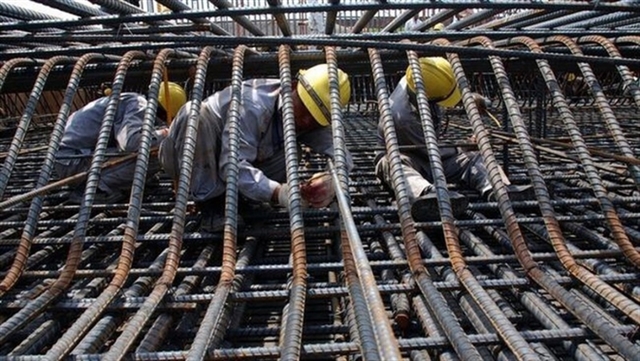 Economy
Economy


|
| Soaring steel prices put contractors into a lot of difficulties and many projects must halt construction which would affect the disbursement of public investment this year. — Photo vov.vn |
HÀ NỘI — The fourth wave of COVID-19 cases, coupled with the recent rise in prices of building materials, has forced many projects to halt construction or even fall into stagnation, which would affect the disbursement of public investment this year.
From the beginning of this year, steel prices jumped by 40 per cent, significantly pushing up investment capital, in some cases by billions Vietnamese đồng for each project.
This put construction enterprises into difficulties. Some have been forced to halt construction to avoid further losses.
A representative from a contractor working on the Cam Lâm – Vĩnh Hảo expressway project said that the increase in steel price pushed up the project’s investment capital by around VNĐ150 billion.
Although there was always a risk of market price fluctuations, an unanticipated huge increase meant unforeseen financial problems.
Halting construction would affect the progress of the projects, especially public-investment projects, a constructor said, adding that solutions must be found early as public investment was considered an important growth factor during the pandemic.
Other component projects like the North-South Expressway projects also faced the same issues.
Nguyễn Minh Khiêm, general director of 319 Corporation which was building the Mai Sơn – National Highway 45, Cam Lộ - La Sơn and Mỹ Thuận – Cần Thơ, said that skyrocketing building material prices put contractors into difficulty and created the risk that projects would fail to follow their planned schedules.
According to the General Statistics Office (GSO), the price index of steel and iron product increased by nearly 20 per cent in April over the same period last year and more than 23 per cent in the first four months of 2021.
GSO pointed out three reasons for the increase, including rise in prices of raw materials for steel production and transportation costs, decrease of global steel supplies as China tightened control over production volume, together with rising domestic demand.
Recently, the Nam Định Province Association of Small and Medium – Sized Enterprises sent a document to the provincial People’s Committee and the Việt Nam Chamber of Commerce and Industry to ask for extension of deadline for construction contracts or temporary halt of construction to wait for prices to fall.
Trần Xuân Ngữ, the association’s President, said that for civil and infrastructure construction projects with total investment of VNĐ10 billion or less, the increase in building material prices pushed up investment capital by around VNĐ600-700 million.
Ngữ said that building materials accounted for around 60 per cent of the construction project’s budget.
Nguyễn Quốc Hiệp, President of the Việt Nam Association of Construction Contractors, said many companies were struggling and stuck between a rock and a hard place.
The Ministry of Transport has asked investors of traffic infrastructure projects to promote solutions to minimise the negative impacts of the steel prices fluctuations.
The Ministry of Construction also asked relevant agencies and provincial people’s committees to evaluate the impacts of the COVID-19 pandemic and building material prices fluctuations on public-investment projects.
Nguyễn Đình Cung, former Director of the Central Institute for Economic Management, said that not only steel but also other building materials saw significant increases in prices, which pushed up investment capital and forced many projects to fall into stagnation.
When the investment capital increased, the investors must ask for adjustments and this process might take several months, even years, Cung said, adding that if no drastic measures were raised, the disbursement of public investment might be low this year. — VNS




